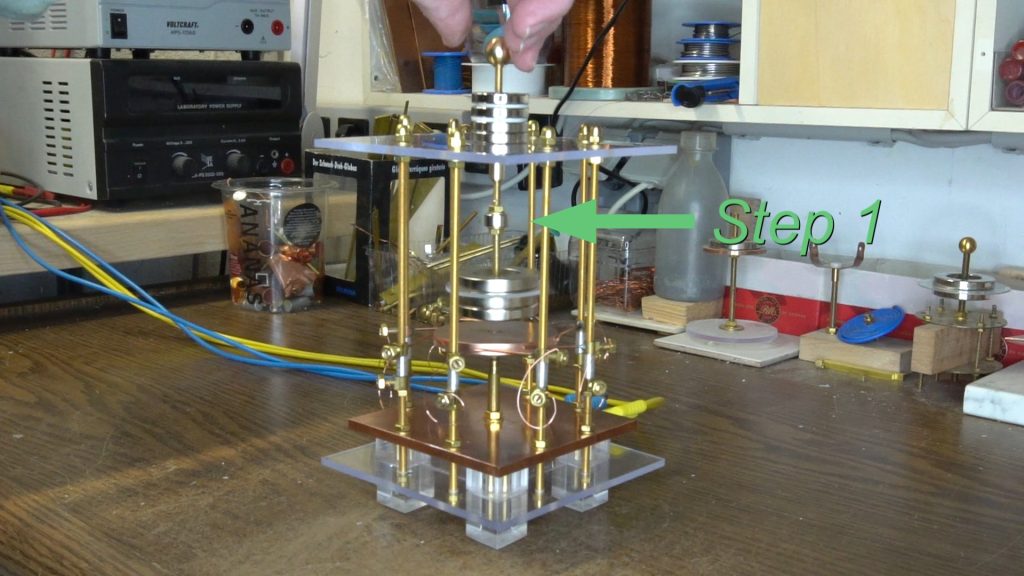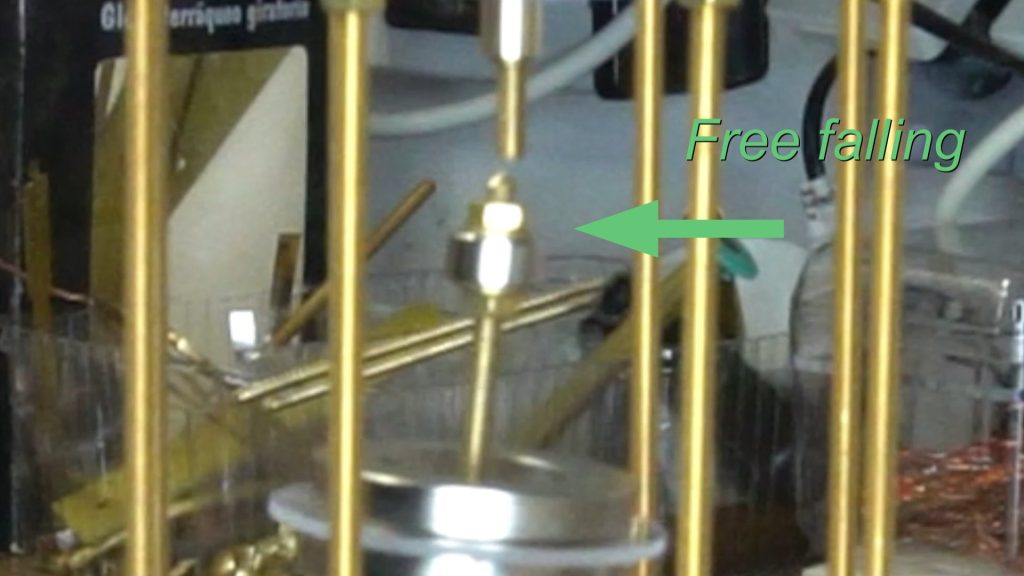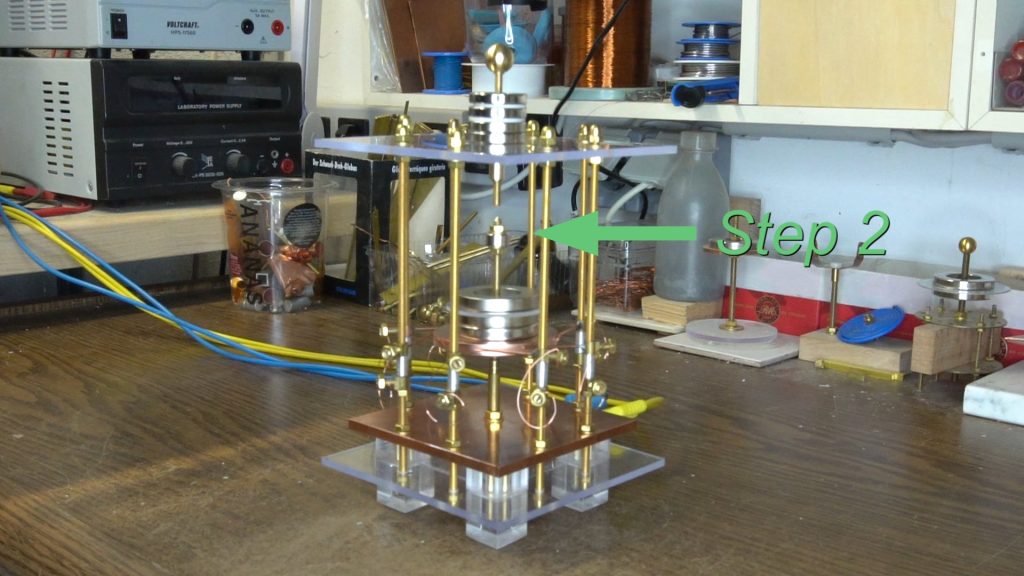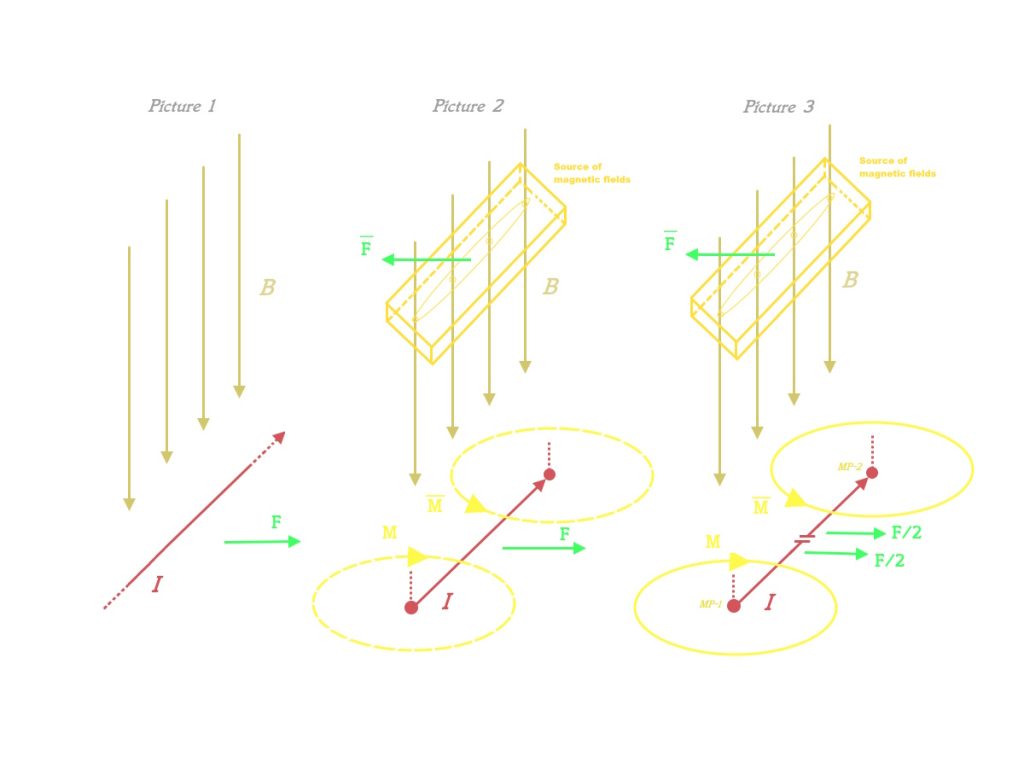What is an Unipolarmotor?
What makes it different from a conventional electric motor?
The driving force in an unipolar motor (and in each other electric motors) is the Lorentz force, as in a conventional electric motor; it is exactly as strong. However, an unipolar motor does not have a commutator that changes the direction of the current which is done usually at half turn; the direction of the current always remains the same.
The commutator allows the current to be sent repeatedly through the magnetic field by means of windings, which makes this construction possible for much more powerful motors.
The most interesting question, however, is why no visible force is exerted on the magnet that generates the magnetic field in the unipolar motor (built according to the faraday pardoxon). Because the magnet rotates with the current carrying conductor if it is firmly connected to the conductor. And the magnet is not set in rotation if it is mounted so that it can move freely, but a force still sets the current carrying conductor in rotation.
An attempt to explain the paradox
Even when I first thought about a larger and clearly designed construction for an unipolar motor, the question of counter torque occurred to me. The paradox of this phenomenon constantly revolves around this point, even in Faraday’s classical paradox, where the magnet does not rotate until it is in firm contact with the current-carrying disc.
The Paradox
The real paradox is that there never seems to be any force acting on the magnet that exerts the force at right angles to the current-carrying conductor. Where is the opposing force (actio = ractio) ?

Step 1
The magnetic ring is suspended freely on a tip, a small magnet above it holds the magnetic ring upwards until it approaches the disc. The copper disc is already rotating due to the magnetic field of the magnetic ring, which is still not rotating.

Free floating and falling
The magnetic ring approaches the copper disc through a screw thread, the small magnet above it can no longer hold the magnetic ring. Furthermore, no rotation of the now falling magnetic ring is visible.

Step 2
The magnetic ring has touched down on the copper disc and is now carried along by the disc as it rotates.
The Paradox
The inexplicable thing is that the magnetic ring rotates neither with nor against (counter torque) the copper disk. Only when the magnetic ring touches down on the rotating copper disk is it pulled along by the rotating force of the disc.
My approach to an explanation
I assume that for every force described by Lorentz, there must be a counterforce (otherwise please ignore the following stuff). Why then does the ring magnet not rotate, only the current carrying disc? Isn’t there always a counter torque, even if it is sometimes difficult to recognize depending on the design?
Can a magnetic field alone have a force on a current-carrying conductor without a causative reason? Without a counterforce acting to the force of the current-carrying conductor? In my opinion: No. But that would mean that there must always be a construct which is generating the magnetic field.
Faraday’s paradox, with the magnet that is always motionless, can therefore only be explained to me in such a way that the counterforce for the counter torque does not act on the magnet, but always exists, outside the event under consideration. It is found in the current collector, which is usually ignored, i.e. in the part where the circuit closes. Since the magnetic field under consideration does not act here, it can only be the magnetic field that also closes the magnetic circuit (further on referred as the external magnetic field).
A few illustrations and experiments
Example of how the current collector disc moves in the opposite direction at the first contact.
The opposite rotation is generated by the external magnetic field, then the fixed connection is made and the current collector disc is carried along. The counter torque is transmitted to the axle of the current collector disc.
The schematic drawings in many physics books and Wikipedias for the Lorentz force are not wrong, but they are completely inadequate. The aspect of the counterforce or counter torque is not shown. This is a major oversight, because this picture (Picture 1) does not exist in reality.

Picture 1: the classic picture of the representation of the Lorentz force (please let me know if you have ever seen it differently with the introduction of the counterforce)
Picture 2: one addition should always be: every current flow in a magnetic field causes a torque on the supply line (an infinitely long conductor distorts the real picture). Because all effects in a magnetic field act at right angles to each other, this also applies to the power supply, there is always a torque / counter torque, even if it cannot have an effect on the movement.
Picture 3: The principle becomes more clear as soon as a separation (sliding contact) is enabled, then the counter rotated torque will be visible. MP-1 and MP-2 are the centers of the magnetic torque.
This is probably also one reason why Faraday’s paradox was neglected. It can only be explained if the entire construction is examined.
It is undisputed that the magnetic field and the current-carrying conductor are responsible for the generating of force perpendicular to the magnetic field and the current-carrying conductor. If the magnet that generates the magnetic field does not move as the paradox shows, then there must be an opposing force that creates an equilibrium. This equilibrium would have to be provided by the external magnetic field and the external circuit. An observation and assertion that needs to be proven.
Few experiments that suggest the approach
The counter torque is clearly visible.
When the current is switched off, the outer ring is driven by friction in the same direction of rotation as the disc with the magnet.
The opposite direction of rotation can only be caused by the external magnetic field.

Coming up soon …
No force effect on the rotation of the ring magnet.
There is no known experiment that would show that a rotational force exists retroactively to the rotational movements caused by the ring magnet.
There must be a balance of force to the magnet and which is always valid.
Clarification and differentiation from the scientific aspect
The paradox of the immovable magnetic ring can be explained purely mechanically independently of the cause of the magnetic field.
